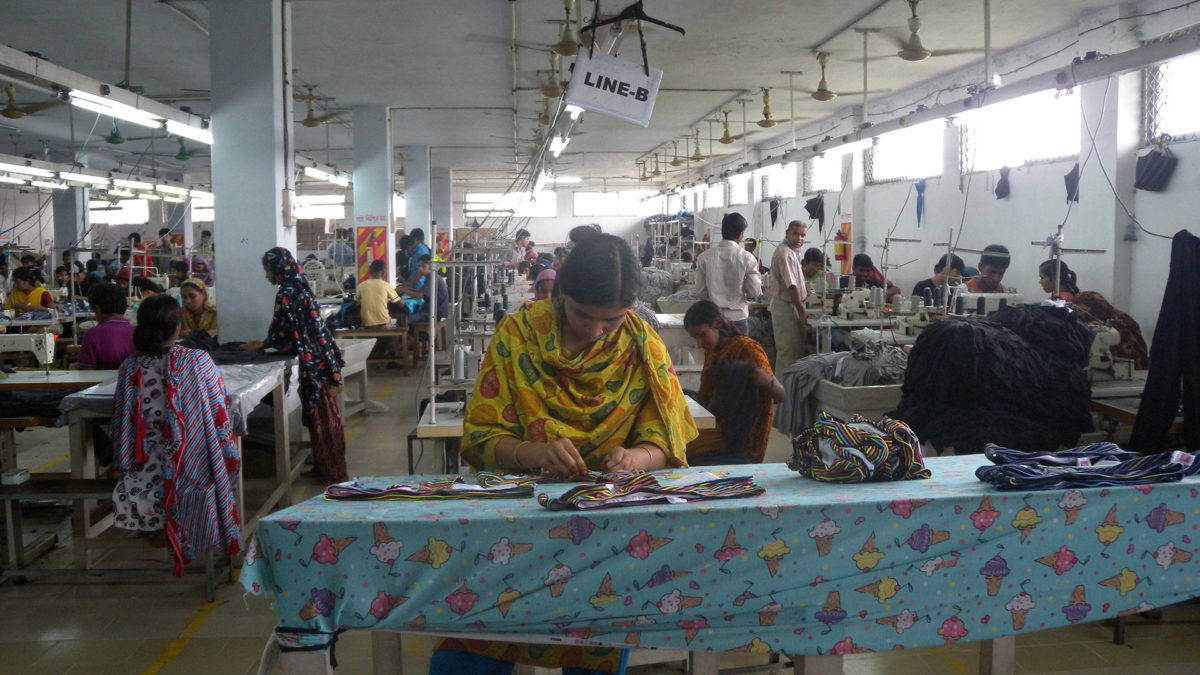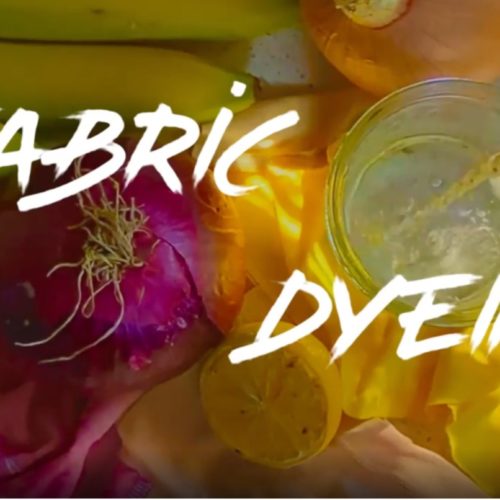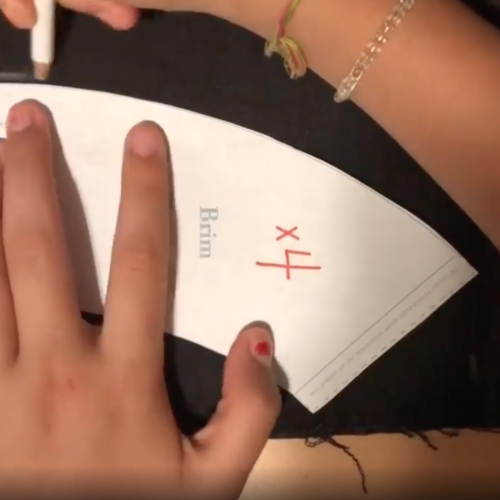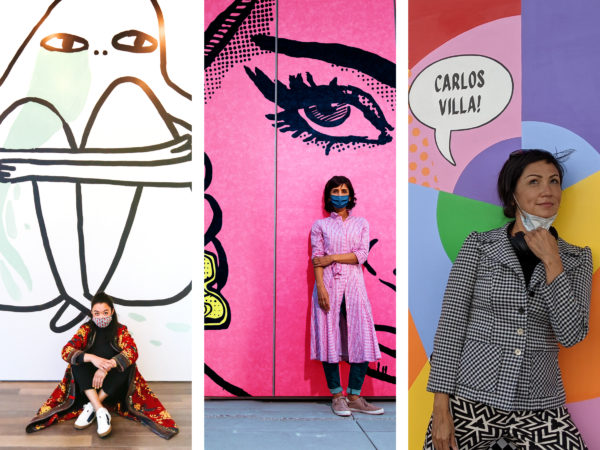Activity
Slow Down Fast Fashion
Upcycling, recycling, swapping, donating, and taking care of your clothes can make a difference in slowing down fast-fashion consumption. Below are some tips and resources to inspire your sustainable, slow-fashion journey.

A textile garment factory in Bangladesh
Make Your Clothes Last
1. Dye your clothes to give them more life. Natural dyes can come from your kitchen scraps — avocado, blueberries, red and yellow onions, turmeric, black tea bags. Check out these tutorials by the museum’s Art Speak interns:
-
 Natural Dyes Tutorial
Natural Dyes TutorialLearn how to color fabric sustainably using food-based dyes with Mindy Luo.
-
 Shibori Techniques Tutorial
Shibori Techniques TutorialJoin Dina Fukunaga as they use Shibori resist techniques to create fabric designs.
2. Try a natural stain remover to maintain your clothing: Mix one part baking soda with one part water, then add a squirt of dish soap to make a paste. Apply the paste on a stain and let sit for several hours before washing normally.
3. Disassemble your clothes to sew masks, patches, tote bags, or a bucket hat.
-
 Bucket Hat Sewing Tutorial
Bucket Hat Sewing TutorialUpcycle fabric to make a bucket hat from scratch with Chandarany Prak-Austin.
Resource Links
Slow Fashion Directories
Places to Donate Used Clothes
According to The Atlantic, “Americans recycle or donate only 15 percent of their used clothing, and the rest — about 10.5 million tons a year — goes into landfills, giving textiles one of the poorest recycling rates of any reusable material.” (Elizabeth Cline, “Where Does Discarded Clothing Go?,” The Atlantic, Jul.18, 2014. Sourced 10/31/21).
Here are some Bay Area organizations where you can donate your used clothing:
Many shelters accept clothing donations; call in advance to see what they are accepting before dropping off donations.
Clothing Swap Resources
Clothing swaps are a great way to refresh your wardrobe while reducing your fashion footprint and building community. Consider organizing your own clothing swap with friends, family, coworkers, or acquaintances or look for swaps hosted by local organizations like the East Bay Depot for Creative Reuse and the Oakland Public Library.
Learn More
The True Cost, a documentary about the environmental and human costs of cheap, mass-produced clothing.
“Where Does Discarded Clothing Go?,” an article by Elizabeth Cline, The Atlantic (Jul. 18, 2014).
The High Price of Fast Fashion,” an article by Dana Thomas, Wall Street Journal (Aug. 29, 2019).
Conscious Chatter, a podcast that asks questions about our clothing.
Follow some educators and organizations like @made.by.yuki, @ajabarber, @Fash_rev, @buyfrombipoc, @theslowfactory, @slowfashion.movement, and @we_are_thrift.
These resources were compiled in conjunction with the exhibition Weaving Stories , which explores how fabrics were woven into the daily lives of people in Indonesia, the Philippines, and Malaysia. Unlike so many of the disposable fabrics surrounding us today, the works on view in Weaving Stories hold value because of the people who made them, their beauty and skillful execution, their connection to family, or their connection to faith. They tell stories that are as varied as the region’s hundreds of weaving traditions and as universal as cloth.





